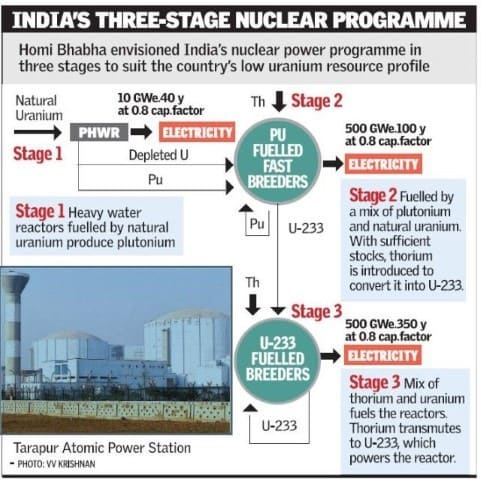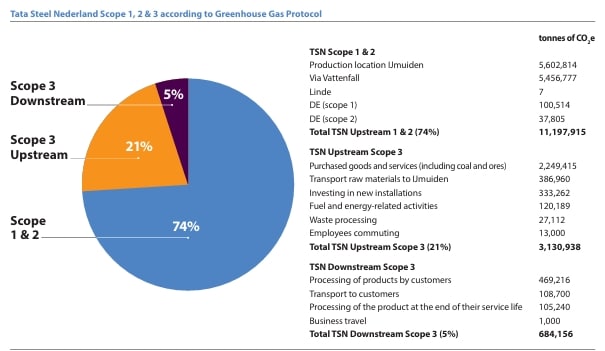The TATAs! Who doesn’t know them? Well, this time their plan is bigger and bolder. They are marching into the nuclear space. Tata Steel, one of the world’s largest steel producers, is exploring nuclear energy to produce green steel.
Small Reactors, Big Ambitions: Tata Reinvents Green Steel
Currently, the steel giant is assessing many factors that would play a pivotal role in green steel production. They aim to install around 200 BSRs, within the atomic energy sector. One unit will have a capacity of 220 MW, which would collectively provide about 45 GW of power.
Although Tata Steel has not officially commented, sources indicate that the company is keen on transitioning to green steel production. This move comes even though Tata Steel does not export significant quantities to Europe, where the ‘carbon border adjustment mechanism‘ (CBAM) is set to begin on January 1, 2026. The CBAM will impose a duty on certain imported goods, including steel, based on their greenhouse gas (GHG) emissions during production. This measure aims to protect European producers from being undercut by imports with higher carbon footprints.
Media reports also reveal that other steel companies are considering BSRs, but Tata Steel appears particularly interested. If the plan proceeds, Tata Steel intends to use the electricity generated by these BSRs to power electrolyzers for green hydrogen production. This hydrogen would then replace coking coal, which is used in steelmaking, significantly reducing carbon emissions. Thus, Tata has etched a clear pathway to decarbonize one of the hardest sectors.
The Curious Case of BSRs…
Bharat Small Reactors (BSRs) are nothing but SMRs that the US, Canada, and Russia have huge success. They can address many challenges related to design and innovation that India’s energy sector is currently facing.
BSRs can be installed in remote areas, extending energy access to such regions, and ensuring reliable power for isolated locations. Additionally, BSRs feature faster construction timelines. Their modular design helps in easy construction compared to traditional reactors.
Another significant feature is, they are cost-effective due to their smaller size and modular construction. They lower costs across their entire life cycle—from construction to decommissioning—making nuclear energy more affordable and sustainable for India.
In summary, Bharat Small Reactors are set to transform India’s energy landscape by offering a versatile, cost-effective, and timely solution to the country’s growing energy demand.
source: insightsonindia, BSR
Indian Finance Minister Nirmala Sitharaman elaborated on the government’s plan to partner with the private sector to establish BSRs. She hailed India for being the leader in this area, citing that the Nuclear Power Corporation of India (NPCIL) has operated 15 pressurized heavy water reactors (PHWRs) of 220 MW each for years.
Recently, R.B. Grover, a member of the Atomic Energy Commission, informed the media that these 220-MW PHWRs are being upgraded. The modified versions, known as BSRs, are expected to be licensed to the private sector.
Union Minister Dr. Jitendra Singh also announced that India’s Nuclear Power generation capacity is to increase by around 70 % in the next 5 years. Currently, its installed capacity is 7.48 GWe, which is expected to be 13.08 GWe by 2029.
Tata Steel Pioneering Sustainability in Netherlands
Green steel is steel produced with zero CO2 emissions. By 2030, Tata aims to cut their CO2 emissions by 40% and become 100% CO2-neutral by 2045. Their production process focuses on minimizing environmental impact and boosting circularity. They believe that increasing steel recycling and raising the use of scrap from 17% to 30% by 2030 will significantly enhance sustainability.
Tata Steel’s plant in Ijmuiden, Netherlands has become one of the most CO2-efficient steel facilities globally, ranking among the top three in the Worldsteel Association’s benchmark. The plant’s emissions per tonne of steel are 7% below the European average. Despite this achievement, Tata Steel remains responsible for 8% of all CO2 emissions in the Netherlands. The company is committed to reducing this percentage by all possible means to support the country’s climate goals.
source: Tata Steel sustainability report
To use nuclear power for green steel production, Tata Steel must first see amendments to the Atomic Energy Act. These changes are needed to permit private ownership and operation of nuclear power plants in India. The government is reportedly considering these legislative changes to initiate the project. We will keep you posted with further developments in this buzzing space.
- FURTHER READING: India and Japan Strike a Green Ammonia Offtake Deal




